Shipping and delivery are a vital part of your eCommerce business. Shipping is also one of the highest costs of eCommerce fulfillment. Fortunately, because of online retail’s growing popularity, eCommerce shipping options have expanded. Here’s your complete guide to the best shipping options for eCommerce.
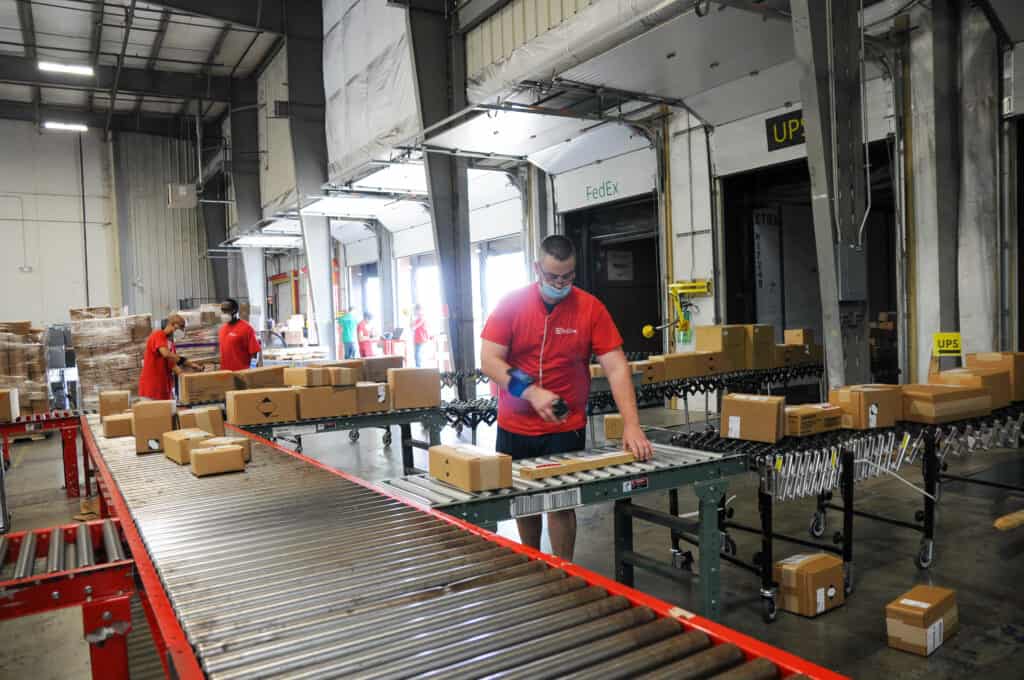
How a 3PL can open new shipping options for eCommerce companies
Online retail is built on trust. When a consumer clicks the button to make a purchase in your online store, they trust you to deliver the promised products. Meanwhile, you trust your fulfillment warehouse to ship your orders correctly and on time.
When you work with an outstanding 3PL, you get more than fast and accurate order fulfillment. Your fulfillment partner can offer additional shipping options, including:
- Flexible carrier selection: Ship with the optimal delivery company for each package.
- Same-day fulfillment: The first step in fast shipping is fast fulfillment.
- Bulk and freight shipping options: Use LTL freight for bulk orders or bulky products.
- Last-mile delivery: Add resilience to your supply chain with regional and local delivery options.
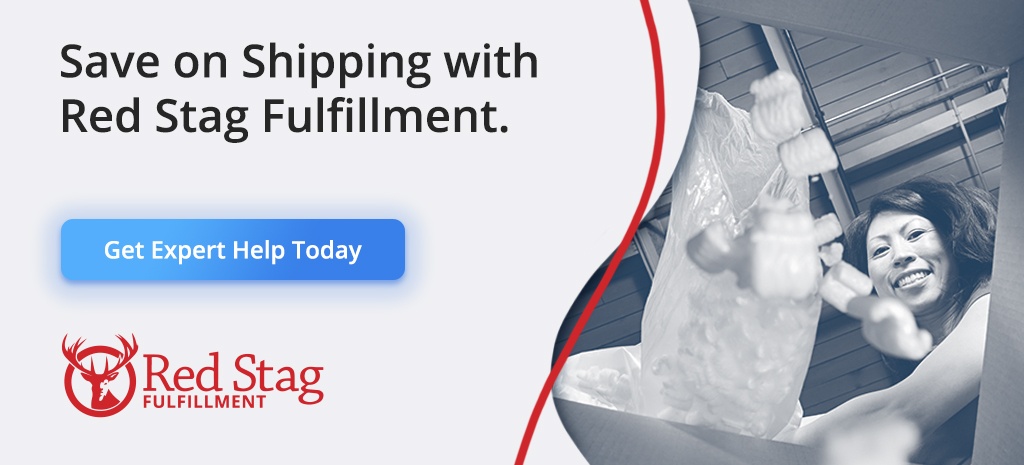
Shipping options for eCommerce
A bad shipping experience may make a customer hesitate to buy from you again, so top-notch shipping and delivery are essential to building a loyal customer base. That’s why choosing the best shipping options for eCommerce delivery for your business is vital.
Consumers want their orders to arrive quickly, but they don’t want to pay much (or anything) for shipping. Here are some popular shipping options for eCommerce to consider for your online store.
Flat-rate shipping
Using flat-rate shipping appeals to consumers and online retailers because:
- You don’t need software to calculate the actual shipping cost for each order.
- Customers don’t get predictable shipping costs and aren’t surprised by high shipping charges, possibly changing their decision to purchase.
- Flat-rate shipping rewards and incentivizes larger purchases. The more you buy, the smaller the shipping charge is as a percentage of the purchase price.
The challenge of flat-rate shipping is that your actual shipping charges may vary, making it hard to set prices that cover your shipping costs.
At-cost shipping charges
Charging the actual shipping cost is an option that works best for many eCommerce retailers. Consumers are familiar enough with online shopping that shipping charges are less likely to be an unpleasant surprise. When you pass along the actual cost of shipping to your customers, you get several benefits:
- You can charge less for your products because your prices don’t have to include shipping costs. This can help you win on price against your competitors.
- At-cost shipping charges give you more control over your profit margins because you don’t have to factor in a variable and unpredictable cost.
- You protect your profitability. If carriers apply surge pricing, it doesn’t come out of your bottom line since raising and lowering your prices to match volatile shipping rates is impractical.
- It’s fairer to your customers because they pay the actual cost of shipping to their address.
Variable shipping charges have some risks for online retail:
- They can discourage a customer from adding to an order if that bumps the shipping cost higher than they are comfortable paying.
- In some cases, shipping costs can drive the price tag for an online order high enough to discourage a consumer from making a purchase.
- Shipping costs can be a problem if you sell heavy items or high-value merchandise that requires insurance.
Still, charging the actual cost of shipping is an easy and widely-accepted option.
- Your 3PL can help you keep your fulfillment costs low and may pass on volume shipping discounts that reduce delivery charges.
- Software to calculate shipping charges is widely available and compatible with many eCommerce sales platforms.
- If you use a 3PL for your order fulfillment, you can work with them to pre-calculate shipping costs for each item and program those charges into your shopping cart.

Expedited shipping
An expedited shipping option for eCommerce is an offer of time savings for your customers. Sometimes, people need a product quickly so they have a gift in time for a birthday or trip. It’s okay to add extra charges for expedited eCommerce shipping, either a flat rate or the actual cost of expedited services. Include next-day, two-day, and other expedited services at checkout to win more sales.
Pickup instead of delivery
One of the biggest problems for eCommerce delivery is the rise of so-called “porch pirates” who take boxes left by your customer’s door before they get home. To combat theft, offer the option for customers to pick up instead of getting a delivery.
Options for consumer order pickup include:
- Many eCommerce delivery services have created secure pickup options. FedEx, UPS, and USPS will often hold packages for customer pickup at their retail locations. UPS Access Point makes this more accessible, with drop-offs (and pickups for returns) at the stores of several retail chains.
- If you have brick-and-mortar stores in addition to online sales, you can include an in-store pickup option for online orders. That will also save you money on shipping since you can include consumer orders with regularly scheduled deliveries to your stores.
- An option that is growing in popularity is secure drop box locations. For example, Amazon Hub lets you retrieve Amazon packages from a secured locker or a staffed counter near your home.
Giving consumers a pickup option for their eCommerce delivery will give them the confidence to order online without fear of package theft. It can also save you money on shipping if you’re able to bundle multiple orders together for delivery to the same pickup location.
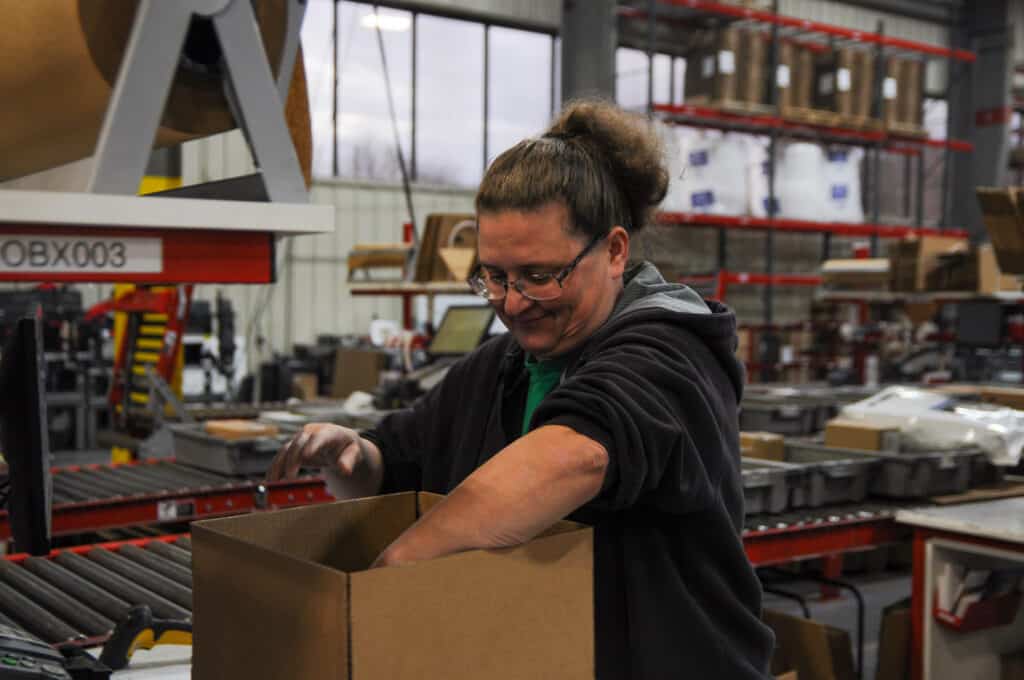
Free shipping
Free shipping is the gold standard of online retail. If you can offer free shipping, you’ve removed an important friction point and smoothed the way to your Buy button.
Benefits of free shipping include:
- It’s one of the best incentives to drive online purchases.
- Three-quarters of shoppers say that free shipping influences their buying decisions, and almost 60% expect next-day delivery to be free.
- It generates goodwill with your customers.
But free shipping isn’t free. Challenges include:
- Shipping costs will cut into your profit margins if you don’t adjust your retail prices accordingly.
- Shipping costs vary for each order unless you ship via a flat-rate service. Otherwise, your shipping cost depends on the shipping zone of the customer, determined by the distance from the point of origin (fulfillment center) to the delivery address.
- Free shipping on small dollar-amount orders is often a money-loser.
How to offer free shipping and still turn a profit
Here are four ways you can get the benefits of free shipping without breaking the bank.
Factor shipping costs into your pricing
If you want to offer free shipping to most customers, most of the time, you need to adjust your pricing to cover the cost. To accurately incorporate shipping costs into your pricing model, it’s not enough to know the average shipping cost for each item. Factor in the typical price your business pays for shipping per item, reflecting the geographic distribution of your customers and fulfillment warehouses. Rerun this data analysis periodically to ensure that your pricing continues to cover the true cost of free shipping.
Set a minimum order to qualify for free shipping
Free shipping can be a great incentive to increase the size of a customer’s order, and many online retailers offer free shipping on orders above a specific dollar amount. In addition to boosting sales, larger orders are more economical to ship, so it’s easier to absorb the shipping costs. And your fulfillment costs will be lower because you will only pay one per-order fee if all the items fit in a single box.
Offer free or discounted shipping as a customer loyalty reward
If you have a customer loyalty program, free shipping is a terrific perk for your loyal shoppers. Or, if you already offer free standard shipping, you might provide two-day or expedited shipping at no extra charge as a reward. Free shipping lets your most devoted fans know you appreciate their business and keeps them coming back for more. And repeat purchases by your best customers is the most cost-effective way to grow your online sales, so free shipping serves as a tool for business expansion.
Free shipping promotions
Time-limited free shipping promotions encourage online shoppers to stop putting off buying decisions and commit to a purchase, so they are a great way to convince new customers to try your product or return shoppers to buy a bit more. In addition, promotions allow you to try out free shipping and gauge its effect on sales.
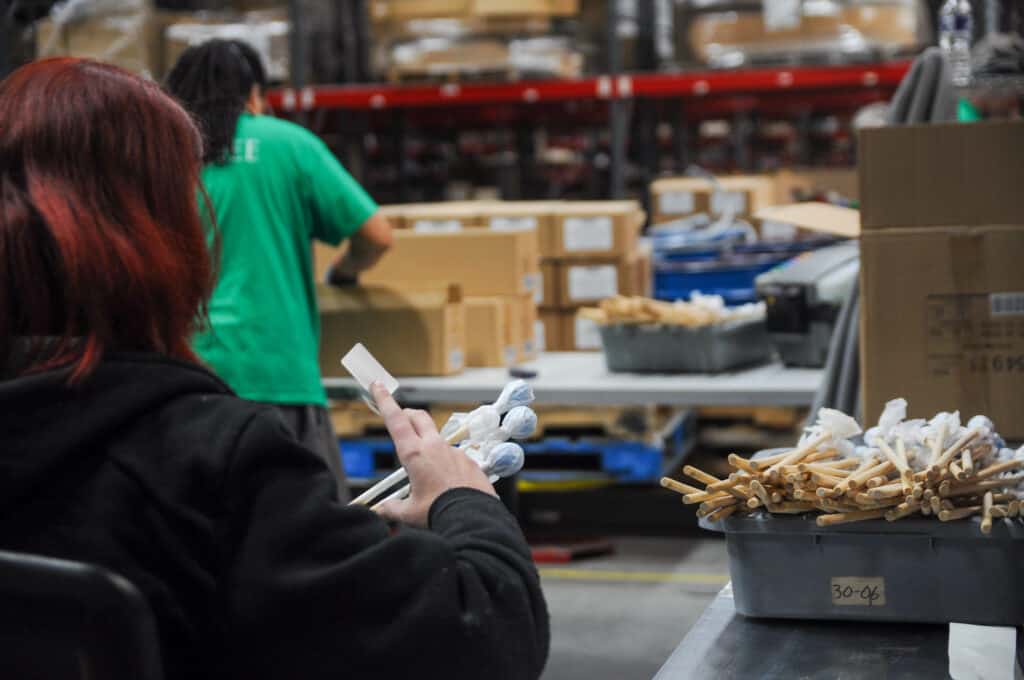
ECommerce shipping methods
There are three basic ways to process and ship online orders: self-fulfillment, dropshipping, or outsourcing to a 3PL.
Self-fulfillment
In the self-fulfillment eCommerce shipping model, you secure and manage your own fulfillment warehouse space. Self-fulfillment tasks include:
- Buying or leasing a warehouse or other appropriate space to store merchandise and pick and pack orders
- Building out shelving and packing stations
- Purchasing packing materials and keeping them in stock
- Arranging regular pickups with one or more delivery companies
- Hiring and managing warehouse staff
- Sourcing warehouse management software and ensuring that it’s operational
- Developing warehouse management protocols
- Conducting cycle counts and full inventories
- Developing operational procedures for receiving inbound shipments.
Many eCommerce companies of all sizes find that warehouse management is too big a task. It can eat into the time you have to work on your business, not just in your business, and it’s a challenge to ramp up a professional warehouse operation from scratch. Fortunately, there are two other excellent shipping options for eCommerce.
Inventory Outsourcing: How to Know You’ve Outgrown Self-Fulfilling
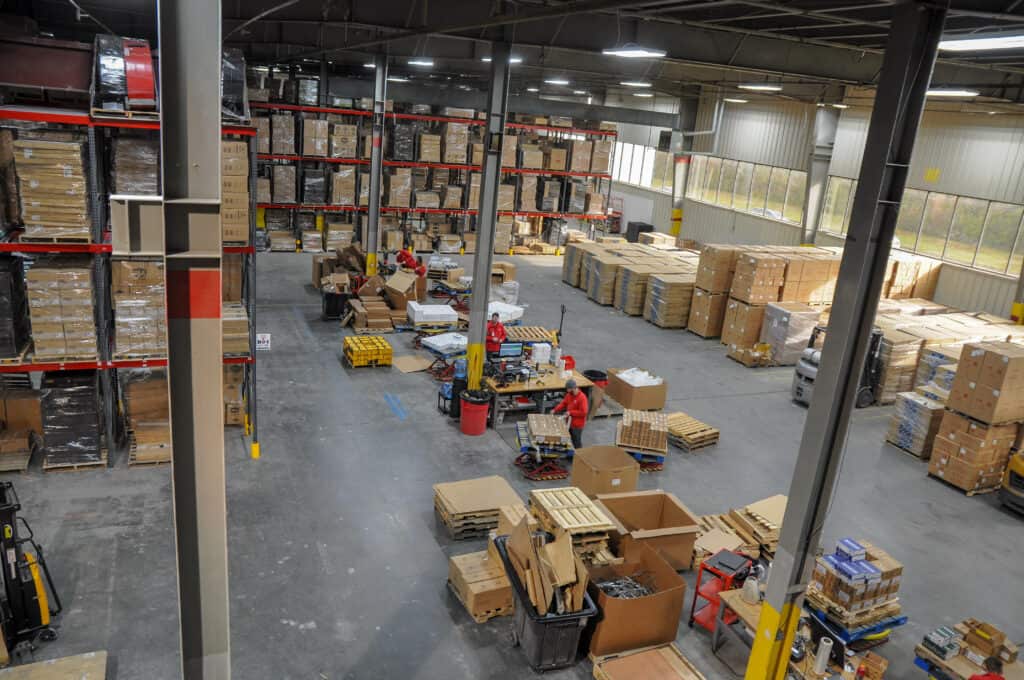
Drop shipping
When you run a drop shipping eCommerce store, you offer inventory for sale but don’t purchase items from your wholesaler until customers place orders. With dropshipping, the supplier handles fulfillment and shipping, too.
Advantages of the dropshipping eCommerce business model:
- It allows you to start your online business without a lot of upfront investment. That’s helpful if you’re short on cash, and it also reduces your risk if the business doesn’t succeed.
- Dropshipping allows you to offer a broad range of products.
- You have guaranteed sales for all the stock you purchase, so you’re never left with unsold merchandise or inventory that won’t move.
- Warehousing and fulfillment aren’t on your to-do list, so you have more time for marketing.
However, dropshipping has some drawbacks:
- Your wholesale cost for each item will be higher than if you pre-purchased inventory.
- If a product in your online store becomes popular, the supplier might run out of stock, leaving you without that hot item to sell.
- You don’t control your fulfillment, so you can’t be assured that the speed and quality of order delivery meet the standards you want to set for your company.
Read our complete guide to drop shipping.

Third-party logistics
Outsourcing your order handling to a 3PL gives you immediate access to high-quality, professional fulfillment services. Here are a few ways that a fulfillment company like Red Stag Fulfillment can improve your shipping options for eCommerce:
- Adjustable warehouse space: Instead of renting or owning a warehouse, you pay for just the space you need in the fulfillment center. With a 3PL, you can seamlessly expand as your business grows or pay for less space during your off-season.
- Add professionals to your team: When you work with a 3PL like Red Stag, you get a warehouse full of seasoned workers, but you don’t have to hire, train, or manage them. And we use our experience shipping over 3 million packages annually to develop best practices that set up your business for success.
- Choose your warehouse locations: When you drop ship or manage a warehouse yourself, you may not get to choose warehouse locations. But with Red Stag Fulfillment’s two warehouse hubs in Tennessee and Utah, you can ship to 96% of U.S. households in two days or less without expedited shipping.
- Same-day fulfillment: At Red Stag, we offer same-day fulfillment—orders are picked, packed, and shipped the same day they’re placed. This can reduce your delivery time by up to a week, helping you get products to your customers faster.
- Shipping discounts: Red Stag Fulfillment moves a very high volume of parcels daily. We leverage that volume to negotiate better pricing with carriers to offer discounted shipping to our fulfillment clients.
- Flexible carrier selection: Because Red Stag Fulfillment has relationships with all the major carriers, we can offer our clients flexible carrier selection. We can choose the best eCommerce shipping option for each order, which provides the best deal for you and your customers.

Get expert help to reduce dimensional weight charges
The major U.S. carriers use a formula to calculate a “dimensional weight” to add a surcharge to oversized packages. When you ship bulky but relatively lightweight products, the dimensional weight may exceed the actual weight, and you’ll be billed for the higher weight. For example, a 30-pound bicycle frame can incur a shipping charge of as much as three times its actual weight.
At Red Stag Fulfillment, we have expertise in shipping oversized products, and we can help you reduce your dimensional weight shipping costs.
Best practices for return shipping
No discussion of shipping options for eCommerce is complete without a consideration of returns. While excellent fulfillment services can lower your return rate, it’s impossible to get it to zero.
Here are some ways to improve the returns experience for your customers — based on the returns policies of top eCommerce companies — and to keep your reverse logistics costs down.
Let customers print return labels online
Making your returns process easy will help consumers feel comfortable buying and is conducive to new customer acquisition. And a key element of a simple return policy is to give consumers a portal where they can view their orders, indicate which items they want to return, and print a return shipping label. It’s easier for the customer and gives you advance notice of items returning to the warehouse.
Offer free return shipping
Free outbound shipping on orders is nice to have; free shipping for returns is essential. If you make a customer pay for shipping back a returned item, you significantly reduce the chance they will buy from you again, even if they like your products.

Expedite your reverse logistics to process returned items quickly
Work with your 3PL to process returns quickly, so customers don’t have a long wait for refunds. And items in good condition should be returned to stock immediately, reducing the amount of stock you have tied up in your reverse logistics process.
Just because someone returned a purchase doesn’t mean they won’t shop with you again. In fact, a positive experience with returns is an excellent way to build trust and gain a repeat customer.

What is the best shipping company for your eCommerce business?
You have a multitude of options for your eCommerce shipping. It’s essential to run numbers on different shipping choices. That will help you develop a plan that controls costs and provides a high level of service for your customers.
A vital part of your eCommerce shipping plan is choosing the best company to handle your order fulfillment and shipping. At Red Stag Fulfillment, we take pride in helping our clients improve their eCommerce shipping. We want to help you ask the right questions and find the right eCommerce shipping options for your business.
More eCommerce shipping resources:
- The Complete Guide to Onboarding With a New Logistics Company
- Package Consolidation: What It Is and How It Saves You Money
- How to Ship Something in the U.S.
This post was originally published in June 2021 and updated in November 2022.









